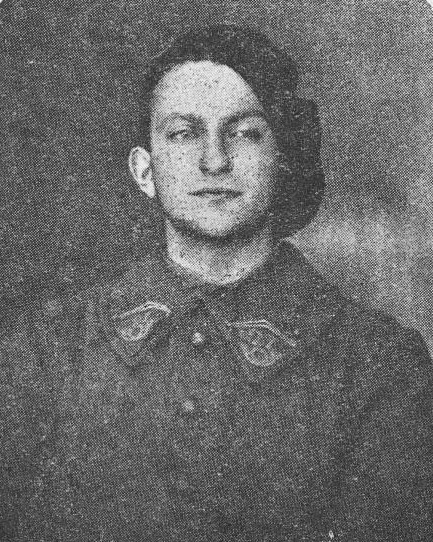Adolphe FEDER
January 2, 2019Alexandre FRENEL
January 2, 2019Michel FINK (born Moïse Finkelstein)
EKATERINOSLAV (UKRAINE) 1919 – DEPORTED TO AUSCHWITZ 1945
Michel Fink’s father was a writer and moved to France with his family in 1927. They settled in Arras, in the north of France. Michel Fink, who had started drawing when he was young, attended a drawing school in 1931. That same year, he arrived in Paris, visited the Louvre and took classes at the Lycée Michelet (high school). He set up an artistic discussion circle within his school and organized lectures, notably on Rembrandt. He painted portraits and later also painted landscapes and still lifes. After being awarded the bronze medal at the drawing competition in 1937, he left the Lycée Michelet, enrolled at university, and later at the Ecole Normale Supérieure.
On April 15, 1940, Fink was sent to Annecy to paint in a military hospital and to Périgueux where he decorated the dining room of the officers’ barracks. Shortly afterwards, he joined the Resistance and became the copy editor of the underground Jewish journal Quand même. He distributed tracts in order to recruit young people and helped Jews escape to Spain and Switzerland. On May 26, 1944, he was arrested by the militia in Toulouse and was interned in Drancy.
On June 30, 1944, he was deported on convoy number 76 to Monovitz, a camp for political prisoners in Auschwitz. There, he worked alongside a group of painters. On January 19, 1945, the Nazis evacuated the men in the camp to Ganaker. As Soviet and American Allied forces joined in Germany, Michel Fink was exhausted and stayed in a military hospital until April 1945. He died of exhaustion in 1945.
Stories of Jewish Artists of the School of Paris 1905-1939
FRENCH-ENGLISH
Capitale des arts, le Paris des années 1905-1939 attire les artistes du monde entier. De cette période de foisonnement, un terme est resté, celui d'Ecole de Paris, qui recouvre une grande diversité d'expression artistique. Dans ce brassage dont Montparnasse est le creuset, un groupe se distingue : celui des artistes juifs venus de Russie, de Pologne et d'Europe centrale. Si leurs styles sont variés, un destin commun les rassemble : ils fuient l'antisémitisme de leur pays d'origine. Certains ont connu la célébrité dès les années 1920, tels Soutine, Lipchitz ou Chagall. D'autres n'ont pas eu le temps ou la chance d'y accéder. Près de la moitié a péri dans les camps de concentration nazis.
From 1905 to 1939, Paris attracted artists from all over the globe as the capital of the art world. This period of artistic proliferation became known as the School of Paris, and includes a great diversity of artistic expression. Within the teeming art world centred on Montparnasse, one group set itself apart: Jewish artists from Russia, Poland, and Central Europe. Although their styles were diverse, they shared the common fate of fleeing anti-Semitic persecutions in their home countries. Some became famous in the 1920s, such as Soutine, Lipchitz, and Chagall, while others did not have the time or the luck to gain renown. Nearly half of these artists died in Nazi concentration camps.





